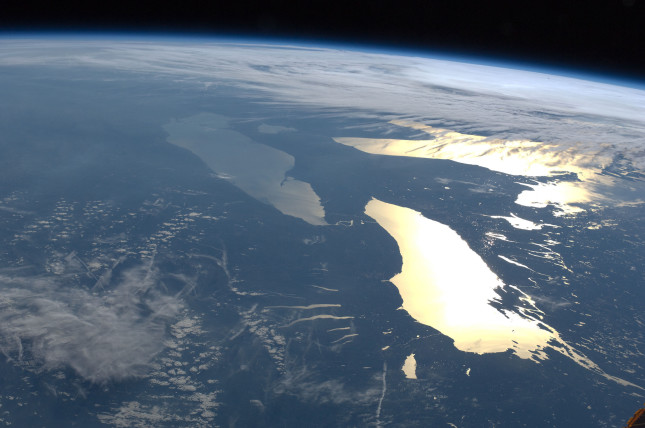-
Panelists Call for Creation of World Commission to Handle Solar Radiation Management
December 5, 2018 By Evan Barnard
“Right now, it’s the Wild West in regard to governance with geoengineering,” said Paul Wapner, a professor at the School of International Service at American University at a recent panel about solar radiation management (SRM) at the Arizona State University’s Washington Center. According to the Governing Solar Radiation Management report which was the focus of the event, SRM, which theoretically would cool the planet by reflecting sunlight back into space, may be a viable last-resort option if climate change mitigation and adaptation efforts fail. Wapner said that “there’s a danger in SRM, there’s a danger in climate change. And, balancing those risks is part of the exercise and will continue to be part of the exercise.”
Three of the more commonly proposed forms of SRM are marine cloud brightening, stratospheric aerosol injection, and reflective physical space installation like a space mirror array. Marine cloud brightening involves increasing the salt content in clouds over the oceans so they reflect more light. Aerosol injection, especially of sulfate compounds, involves spraying minute, suspended airborne particles called aerosols into the upper atmosphere to help form clouds through nucleation. All of these methods are designed to reduce the solar rays reaching and heating the planet by increasing a surface characteristic called albedo, a measurement of how much light a surface reflects and does not absorb.
Geoengineering is the third, last-resort option for responding to climate change effects if mitigation and adaptation efforts fail. While no SRM or other geoengineering efforts are actually yet in place, due to exponential increases in greenhouse gas emissions and projected catastrophic effects of global warming, now is a good time to begin planning for the implementation of geoengineering, including governance, the panelists said. According to the report, SRM governance could include monitoring, impact assessment, and feedback processes to take new information and developments into account. Although they disagreed on some things, such as the efficacy of experimentation and whether to actively encourage governments to promote SRM, the report’s authors, who include environmental experts and social scientists, all agreed that some governance structure is needed.
The panelists called for a world commission on SRM to be established to guide decision-making regarding potential deployment of an SRM system. Organizing a governance structure could give us insight into how to properly and safely address the testing, implementation, and potential continued use of SRM technology, said Genevieve Maricle, the global knowledge and innovation lead at the World Wildlife Fund’s Climate and Energy Practice. Walter Valdivia, senior policy editor with the Mercatus Center at George Mason University, considered the importance of stakeholder inclusion in a governing body, noting that information these days often gets spread in ways where many people never get access to the facts or science.
Although the panelists spoke of the need to create a governing body on solar radiation management, many questions still need to be answered. Researchers are now considering non-theoretical or computational work to understand whether such technologies would work if deployed, because questions about the secondary effects of SRM still persist, said Wapner. Nevertheless, exploring governance options now means preparing existing institutions for when SRM might be a serious policy consideration. He noted that governance is “not just about stamping out scary things.” Regulatory and administrative structures “can actually create incentives and can actually guide action,” but until they do, he said, geoengineering governance will still be like the Wild West.
Read More:
- The ethics of geoengineering seem to correspond to Just War theory.
- No large-scale experiments have tested any solar radiation management technologies yet.
- SRM may be a revolutionary way to slow the rate of global warming, but some people consider it unethical.
Sources: American Meteorological Society, NASA, NASA: Global Climate Change, NOAA, North Carolina Climate Office, Stanford University, University of Washington
Photo Credit: Great Lakes in Sunglint (NASA, International Space Station, 06/14/12)
 A Publication of the Stimson Center.
A Publication of the Stimson Center.



